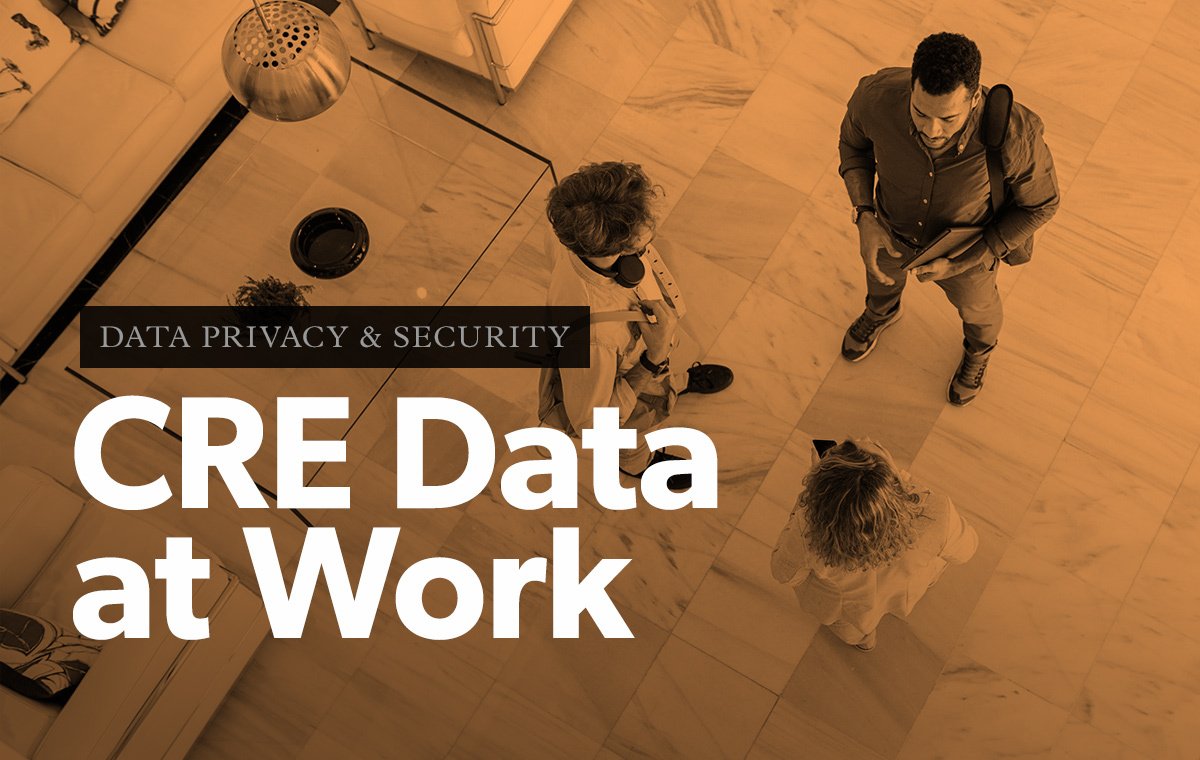Data collection is nothing new. Every time we use an app on our phones, companies are able to learn more about our habits through our unique behaviors. Ordering something online? Amazon can determine your interest in related products based on your order history. Hankering for your weekly Thai food dinner? UberEats might just start sending you exclusive discounts to local Thai restaurants. Trying to avoid traffic on your way to work? Waze and Google Maps can reroute you to a quicker, less-traveled path.
This same concept is beginning to play out with commercial real estate (CRE) data in the office. The more technologies that landlords and property teams adopt, the more data and analytics become an integral part of a modern CRE portfolio. As is the case anytime businesses collect data on their customers, information can be used to achieve a plethora of company goals. For the office, those goals can be broken down into leasing needs, building investments, and customer satisfaction. Let’s break down each topic to prove the return on investment (ROI) of data in CRE, as well as how that data must be protected for the safety of your tenants.
Supporting Leasing
Tenant retention remains a key metric when evaluating the overall success of an asset or portfolio. Once you factor in the leasing and tenant improvement costs associated with filling vacant office space — particularly in competitive markets where these concessions can be exorbitant — the importance of retention becomes undeniable.
Therefore, using tenant experience technology to collect data that will help retain tenants has become an irrefutable industry need. Leveraging a single platform that can connect tenants to all of a building’s experiences and amenities will not only allow them to access your services and offerings more easily — thus keeping them engaged with the office — but it will help property teams understand engagement trends at both the building level and the individual tenant level. Once you’re able to identify which tenants are the least engaged with your building, you can start developing a tailored strategy to retain them.
Additionally, using a platform that provides competitive benchmarking metrics will ensure that your office stands out from the rest. Property teams can compare their building amenities and services to nearby or model offices, allowing them to showcase their most desirable features to prospective tenants.
Informing Office Investments
In a similar vein to how data supports leasing needs, it is also a game-changer for property teams looking to make smarter CapEx and OpEx decisions. A platform’s ability to capture previously inaccessible data on tenants, amenities, and spaces within those buildings will arm property teams with actionable takeaways.
Whether it’s helping you understand how your portfolio compares to industry benchmarks, or quantifying the programming and events that are most valuable to your tenants, the right data and analytics can take the guesswork out of building improvement and budget planning. It’s easier to provide for your tenants once you know what they do or don’t engage with within the building.
Increasing Customer Satisfaction
TeX data can also help increase overall customer satisfaction with your building or portfolio. The more technologies that are integrated into your tenant experience platform, the more building activation points you will have to accurately measure tenant engagement. By learning what your tenants use or don’t use in your building — or even through direct feedback from tenant surveys — you will be able to determine what your tenants really want out of a workplace.
Investing in the right amenities for your unique building community shows that tenant voices are heard, which in turn heightens tenant perception of your landlord brand and encourages individuals to continue engaging with your building (thus, producing more meaningful data). A successful building or portfolio will have established this real-time feedback loop, so they can remain agile and proactive about evolving tenant needs.’
Protecting Your Data
Though indubitably useful, data collection never comes without risk. The more CRE companies move from a traditional business model to a digitally-enhanced business model, the more considerations they will need to take in terms of data privacy and security compliance.
In a Deloitte survey about digital transformation, CRE companies admitted to struggling with defining their digital technology roadmap: 56% of respondents believed that the COVID-19 pandemic uncovered shortcomings in their company’s digital capabilities. Furthermore, CRE companies expressed growing cybersecurity and data privacy concerns due to the increase in virtualization, data capture, and data-sharing occurring through cloud-based and digital tools. On top of that, about 48% of employees reported their companies do not offer or make it clear that they provide any sort of data training.
Good data privacy and security practices are not only legal requirements, but will serve as a differentiator for companies looking to stand out in a tech-enabled environment. There are certain steps CRE teams can take to meet these needs, such as avoiding the collection of personal identifiable information, or PII. They can also vet technology providers to make sure they have the appropriate certifications to prove the validity and security of their platforms. We’re currently at a pivotal moment in CRE history, where we’re learning about technology and data collection at an accelerated pace. Don’t forget you will need to protect that data as well.
For more information on how HqO can help you protect and secure your data, download The Data Privacy & Security Handbook for CRE professionals.



